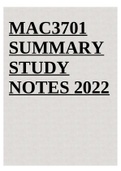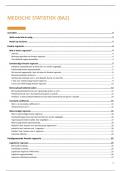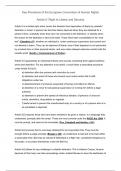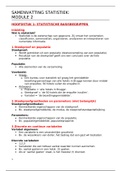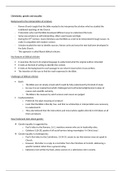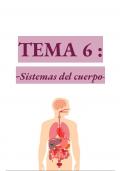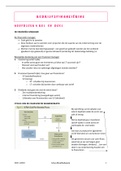Samenvatting
MAC3701 SUMMARY STUDY NOTES 2022
- Vak
- Instelling
MAC3701 SUMMARY STUDY NOTES 2022 STUDY UNIT 1 PLANNING AND CONTROLLING INVENTORY Cost of holding inventory is expensive – capital is needed to create suitable infrastructure (factory, staff, computers, stationery etc) and cash flow also needed for operational activities of entity. Investmen...
[Meer zien]
